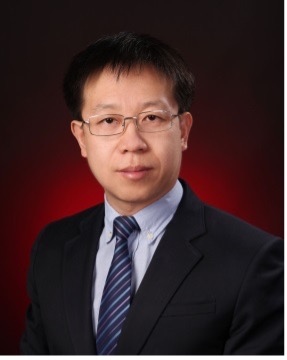Yang Liu
Contents
Please tell us about yourself
I grew up in Changchun city, northeast of China. The name of the city means “always spring season”, but it has obviously four different seasons in the real world. I received an M.S. (2003) and a Ph.D. (2006) degree in geophysics from Jilin University, the biggest university in China since 2000. A joke about Jilin University is that the beautiful Changchun city is located inside the university campus. The good thing is that the university has the complete disciplines, which helped me expand my research fields later. When I studied for my master degree, programming of geophysical methods became one of my interests. Until I graduated in 2006, I was writing a data processing system using C++. However, starting it from scratch was absolutely depressing. Fortunately, I survived through the toughest stage and finally completed a small system with interface for plotting and several processing modules.
I arrived at the University of Texas at Austin in 2007 to work with Prof. Sergey Fomel for three years as a postdoc fellow. At that time, I started to witness the academic openness of China, which began to send lots of visiting scholars and students to the entire world. I enjoyed the academic atmosphere in Sergey’s group, especially the excellent environment for reproducible research. I absorbed knowledge of computational geophysics like a sponge and began to realize that “Science needs vocal skeptics, openness, and verification!”, which inspired me to work on revealing the mysteries of the Earth. The three years in Austin for me were the most important period for a change of attitude towards life and the formation of my scientific ideas.
In 2010, I came back to Jilin University, where the Nonstationary Geophysical Signal Analysis group (NGSA) was gradually established, and my research interests expanded to non-seismic methods and even tectonics. Meanwhile, I also devote part of my time to developing open-source codes and maintaining the Madagascar server. I believe that volunteers for different kinds of support keep the Madagascar software vital.
When did you first hear about Madagascar?
Back in 2006, when I had the interview for my postdoc position in Austin, Sergey introduced me to Madagascar. I was surprised at the seamless link it provided from scientific ideas to journal papers.
What was the most difficult part in learning Madagascar?
The software architecture of Madagascar has changed a lot. In the beginning stage of learning Madagascar, I was always confused when looking for the “distributed” source codes when writing my own programs by standing “on the shoulders of giants”.
From your contributions to Madagascar, which one is your favorite?
I try to do some meaningful work on improving the reputation and vitality of Madagascar, such as providing open-source examples for new geophysical methods and their practical applications, tutorials for data processing in several Madagascar schools, and support for the Madagascar webserver. Propagating the idea of Madagascar-style open-source geophysics in China would be the most favorite one for me.
What advice would you give to those who wish to learn Madagascar or to contribute to it?
For learners: One day, you will learn all the skills, but you may need to understand a few things before you start: 1. Why reproducible? The success and credibility of science depend on independent testing and replication. Reproducibility gives us the most powerful tool for scientific progress. 2. Why Madagascar? There exist plenty of open-source geophysical software, e.g., SEPlib, SU, FreeUSP, but Madagascar is the only one to provide all the components of a shared research environment. 3. How to master it? Never start from scratch! The best way to learn is to follow the examples of others, while keeping in mind that everything is reproducible in Madagascar.
For contributors: Remember Sergey’s maxim “Instead of computational reproducibility being the responsibility of an individual author, it should become the responsibility of open-source scientific-software communities”. “A single spark can start a prairie fire”: never think how little you have contributed. Even if it is a small correction, you are making Madagascar move towards a better direction.
Respect the spirit of open source, and you will change the world!
